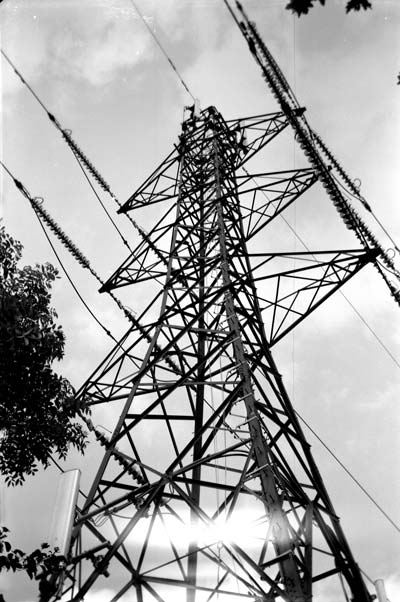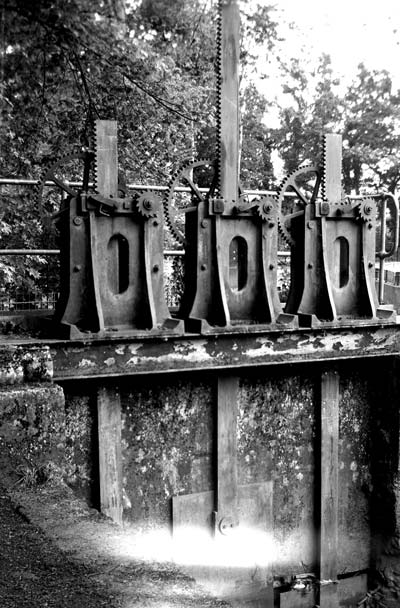Soho Pilot
Specification

| Manufacturer | : | Soho |
|---|---|---|
| Produced | : | 1933 |
| Classification | : | Medium Format |
| Body Type | : | Folding Bed |
| Bellows Deployment | : | Sliding Rail |
| Construction | : | Bakelite |
| Film Type | : | 120 |
| Film Width | : | 62mm |
| ImageSize | : | 2¼ x 3¼ in |
| No. of Images | : | 8 |
| Lens Type | : | Doublet |
| Focus Type | : | Fixed |
| Focal Length | : | 110mm |
| Focal Range | : | 6ft - inf. |
| Aperture Type | : | Fixed |
| Aperture | : | f/14 |
| Shutter Type | : | Rotary |
| Shutter Speeds | : | B, I*(1/50 sec) |
| Size Open (w x h x d) | : | 100 x 180 x 117 mm |
| Size Closed (w x h x d) | : | 100 x 180 x 42 mm |
| Weight | : | 530g |
| * Measured on this camera | ||
Art Deco Credentials
![]()
![]()
![]()
![]()
![]()
Iconic: Famous, well-known and celebrated
- Produced during the main Art Deco period.
- Moulded Bakelite body.
- Basket weave patterning on Bakelite.
- Octagonal face plate.
- Concentric octagons on face plate
- Sunburst motif surrounding red window on rear.
- Chrome back closing lock.
- Chrome winding knob with concentric circles.
- Chrome table stand.
- Chrome bezel around red window.
Description
The Soho Pilot Camera was manufactured by the Kershaw Manufacturing Co. and was sold through Soho Ltd. It was capable of capturing eight2¼ x 3¼ inch (6x9 cm) sized images on standard 120 film. It was constructed of black Bakelite with black bellows. It was designed with art deco styling including a octagonal face and a basket weave pattern impressed on the body. The most charming aspect of this camera is the sunburst motif on the rear, surrounding the red window.

To open the camera, a catch is release and the folding bed is lowered, and the lens standard pulled forward to latch on a spring at the front of the bed. Brilliant view-finder, swivels for portrait or landscape. Film advance indicated by red window, not coupled to shutter. The Pilot was available with either a meniscus lens, at 15/-, or a doublet, at 20/-. The camera shown above has the doublet lens.
How to Use
This camera takes 120 film which is easily available. It supports Timed mode and Instant with a speed of about 1/50 sec. It has a single aperture settings of f/16. With a shutter speed of only 1/50 sec, make sure you brace the camera against your body or something solid and press the shutter smoothly to avoid camera shake.
If you don't want to bother with an exposure meter, follow the guide shown. It is based on the 'Sunny 16' rule. Film is so forgiving and will produce acceptable results even when over-exposed by 2 or 3 stops or under-exposed by 1 stop.
The table shown assumes the shutter speed is about 1/50s.
The table also assumes that the sun is at least 30 degrees above the horizon - that's 10am - 5pm on a summers day in the UK.
Remember that the exposure guide in the manual may not be helpful as it is based on the use of old film with a low ISO value.
So, on a nice sunny day, it's simplicity itself. Just load film and snap away.
Using ISO 100/125 film - shutter speed 1/50s
| Weather Conditions | Shadow Detail | Aperture | Exposure |
|---|---|---|---|
 Sunny SunnySnow/Sand | Dark with sharp edges | f/14 | +2 Stop Overexposed Acceptable |
 Sunny Sunny | Distinct | f/14 | +1 Stop Overexposed Acceptable |
 Slight Overcast Slight Overcast | Soft around edges | f/14 | Good |
 Overcast Overcast | Barely visible | f/14 | -1 Stop Underexposed Acceptable |
 Heavy Overcast Heavy Overcast | None | f/14 | -2 Stops Underexposed Not Acceptable |
 Open Shade Open Shade/Sunset | None | f/14 | -3 Stops Underexposed Not Acceptable |
Photographs taken with this Camera
Ilford FP4+ film, developed in D76 1+1.
Notice the light leak. Bellows not glued down properly. I've fixed it now.



